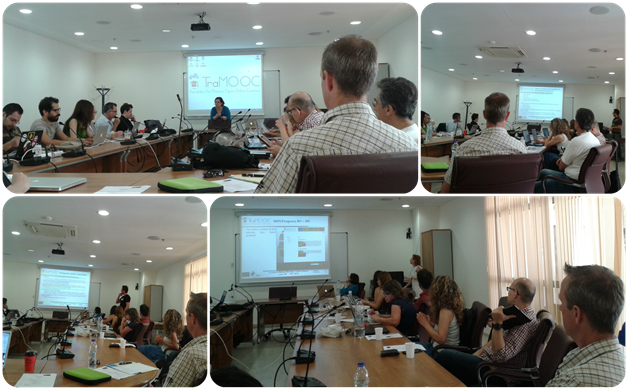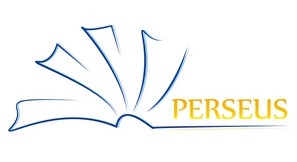 With 6 months of operations under its belt, the PERSEUS (Promoting Excellence & Recognition Seal of European Aerospace Universities) Coordination and Support Action, has already reached several achievements and milestones. Namely, the project has started-off, with two parallel activities. The one devoted to the realization of a survey (complete map) of the quality and accreditation systems of EU aerospace education, and the second aiming at the development of standards for aero-engineering curricula.
Moreover, in the course of the development of standards, the 1st PERSEUS open Workshop was successfully organized and held on June 2nd 2015 at the EC premises in Brussels. Following the Steering Committee meeting that took place on the 1st of June and whereby the Work-Package leaders exchanged information about the main progress and achievements of their respective WP, the PERSEUS Workshop was an opportunity for the project’s Network of Experts and Advisory Board members to provide their valuable viewpoint on the preliminary standards and learning outcomes identified for the aero-engineering curricula. The feedback provided by these key-experts is also expected to greatly support the PERSEUS partners in completing the definition of the specific accreditation criteria.
For more information please visit the PERSEUS project website.
With 6 months of operations under its belt, the PERSEUS (Promoting Excellence & Recognition Seal of European Aerospace Universities) Coordination and Support Action, has already reached several achievements and milestones. Namely, the project has started-off, with two parallel activities. The one devoted to the realization of a survey (complete map) of the quality and accreditation systems of EU aerospace education, and the second aiming at the development of standards for aero-engineering curricula.
Moreover, in the course of the development of standards, the 1st PERSEUS open Workshop was successfully organized and held on June 2nd 2015 at the EC premises in Brussels. Following the Steering Committee meeting that took place on the 1st of June and whereby the Work-Package leaders exchanged information about the main progress and achievements of their respective WP, the PERSEUS Workshop was an opportunity for the project’s Network of Experts and Advisory Board members to provide their valuable viewpoint on the preliminary standards and learning outcomes identified for the aero-engineering curricula. The feedback provided by these key-experts is also expected to greatly support the PERSEUS partners in completing the definition of the specific accreditation criteria.
For more information please visit the PERSEUS project website.
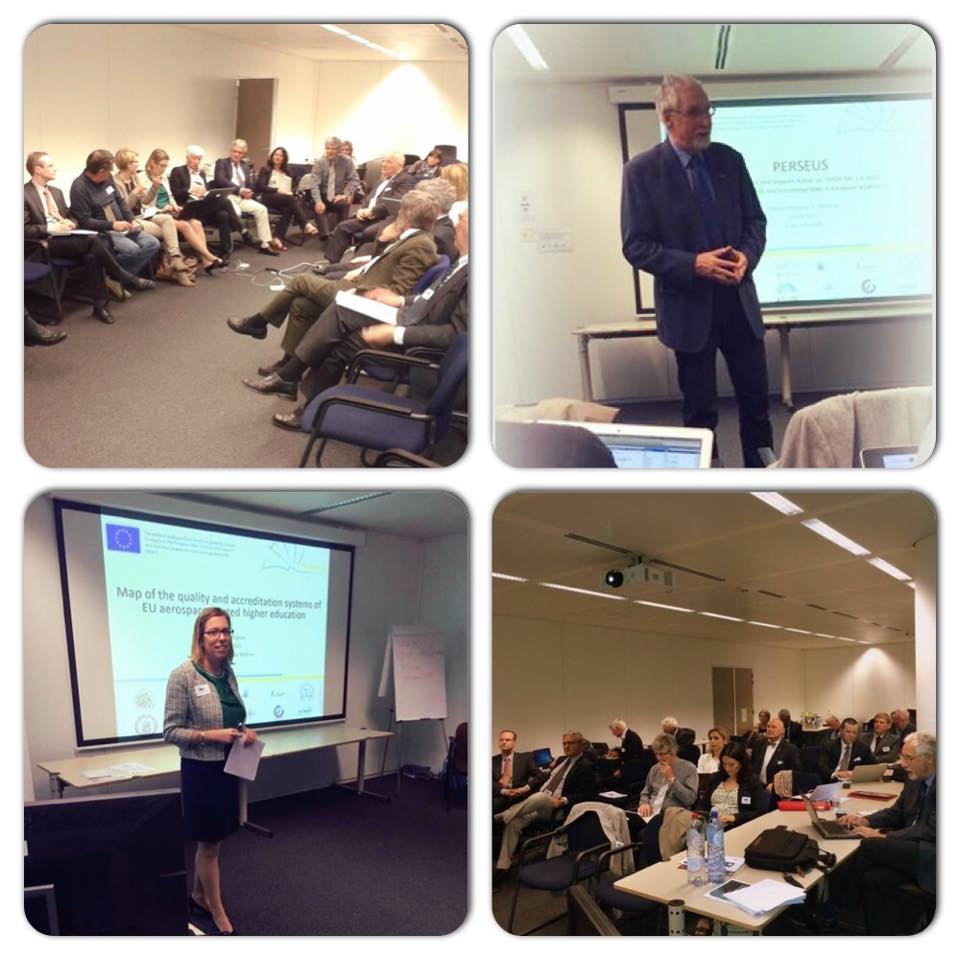
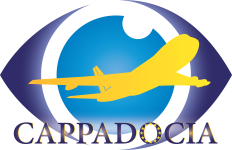 The CAPPADOCIA consortium is thrilled tο Invite you to the project’s two upcoming Workshops:
The CAPPADOCIA consortium is thrilled tο Invite you to the project’s two upcoming Workshops:
1. On "Impact of the development of Aerostructures on Maintaining and Extending the European Aeronautical Industry Leadership", to be held on September 4th, 2015 in the frame of the 5th EASN Association Workshop on Aerostructures in Manchester, UK ; and
2. On "Impact of developments on Maintaining and Extending Industrial Leadership" to be held on October 20th, 2015 as a parallel session at the forthcoming Aerodays in London, UK.
Both Workshops are supported by the European Commission and ACARE Working Group 2. Their main objectives are to a) Identify what recent developments need to be taken into account in the EU funded research landscape, b) discuss the impact of the developments on the achievements for Challenge 2, c) identify what policy measures need to be undertaken by the EC to support Challenge 2, and d) provide recommendations for updating the SRIA with respect to these developments. Moreover, said Workshops are expected to bring together key RTD persons from the European aviation industry and organisations. The results of the workshops will support CAPPADOCIA in providing recommendations for updating the SRIA, which will affect the research and innovation programme in the second half of Horizon2020 and beyond.
Please indicate, before August 14th (for the 1st Workshop) and before September 30th (for the 2nd Workshop) to Erik.Baalbergen[at]nlr.nl (cc: Johan.Kos[at]nlr.nl) if you intend to give a pitch and, if so, the topic of the pitch. More information can be found here.

Having completed its second and final year, the Promo - Air project has successfully organized its Final Workshop, where more than 25 key stakeholders from Industry, Academia, and European Commission had the unique opportunity to participate in a fruitful discussion. The workshop was hosted by the European Commission in Brussels, Belgium on April 23rd, 2015 and was focused on informing the aeronautical stakeholders about the achievements of the Promo-Air initiative, presenting the lessons learned from the process of getting in contact with European high-school students and identifying a roadmap towards additional actions and policies required for further stimulating young Europeans towards this aim. During the event, the process “of attracting high-school students in the Aeronautics Profession” was thoroughly analysed and various approaches were covered.
The first part was dedicated to the presentation of PromoAir achievements; Among others was the fact that in total, 17 Universities from 15 EU countries participated in the European Aeronautics Science Week and 4 at least expressed the interest to host the event after the end of the project establishing a link between the high school students and the Academia.
During the other workshop sessions the perspective of the Industry (more specifically of the CleanSky JTI), the Academia and the European Commission were approached. The workshop closed successfully with an open discussion in which the participants shared their viewpoints regarding the main topic of the event. The Promo – Air visual educational material will be at the disposal of everyone who would be interested to promote aeronautics to young Europeans.
It can be requested via the following email: promo-air[at]easn.net or it can be reached online through the promo-air website.

 The HIKARI project has brought together all the hypersonic initiatives in Europe and Japan to drive the convergence of their concepts and roadmaps. Thanks to the expertise of its 16 partners from industry, research centers and academia, it has derived a common path towards a joint design for high speed air transport and ultimately towards joint flight testing. The project has shown how the Europe-Japan partnership could allow achieving such high ambitions as defining the guidelines and roadmaps towards future high speed air transport. This fruitful outcome allows considering a natural next step for this cooperation, in order to achieve a joint design following the HIKARI guidelines, and to prepare joint flight demonstrations following the HIKARI roadmap.
The HIKARI project has brought together all the hypersonic initiatives in Europe and Japan to drive the convergence of their concepts and roadmaps. Thanks to the expertise of its 16 partners from industry, research centers and academia, it has derived a common path towards a joint design for high speed air transport and ultimately towards joint flight testing. The project has shown how the Europe-Japan partnership could allow achieving such high ambitions as defining the guidelines and roadmaps towards future high speed air transport. This fruitful outcome allows considering a natural next step for this cooperation, in order to achieve a joint design following the HIKARI guidelines, and to prepare joint flight demonstrations following the HIKARI roadmap.
Although HIKARI has ended its final year and a successful period of project activities, it was present at the Paris Air Show and it is currently organizing its participation to several distinguished upcoming events, such as the 5th EASN Workshop and the Aerodays 2015 to be held at Manchester and London on September and October 2015 respectively.
HIKARI's presence in these major events indicate that there is still room for further research on the crucial field of High Speed Transport (HST). Hence, when overlooking passenger transport at the horizon of 2040 - 2050, a high speed transport design capable of sufficient performance levels to capture a reasonable market share (>10%) and to sustain stable operations seems to be feasible.
For more information visit the HIKARI project website.
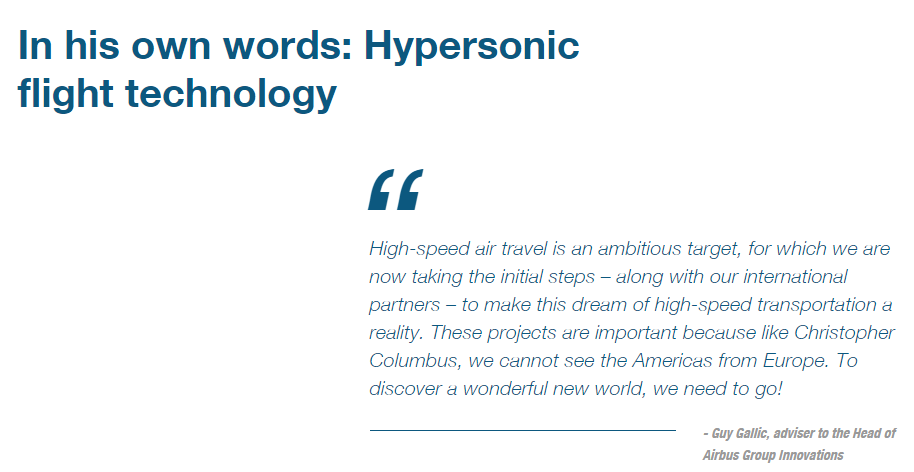
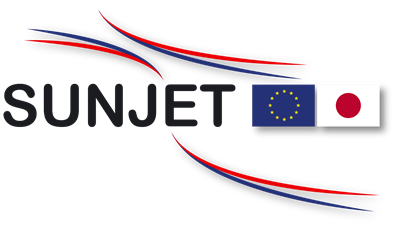 SUNJET II (SUstainable Network for Japan-Europe aerospace research and Technology cooperation II) aims at enhancing the relations between EU and Japan in research activities related to aviation. The SUNJET II project initiated its activities with a very successful Europe-Japan Symposium on "Electrical Technologies for the Aviation of the Future".The 2-day symposium was held on 26-27 March 2015 in Tokyo and was hosted by the Delegation of the European Union to Japan. A number of excellent presentations were given from the most important European and Japanese stakeholders and are now available on the SUNJET II public website.
SUNJET II (SUstainable Network for Japan-Europe aerospace research and Technology cooperation II) aims at enhancing the relations between EU and Japan in research activities related to aviation. The SUNJET II project initiated its activities with a very successful Europe-Japan Symposium on "Electrical Technologies for the Aviation of the Future".The 2-day symposium was held on 26-27 March 2015 in Tokyo and was hosted by the Delegation of the European Union to Japan. A number of excellent presentations were given from the most important European and Japanese stakeholders and are now available on the SUNJET II public website.
SUNJET II is expected to open new application domains for future aeronautics EU-Japan cooperation agreements, aiming at EU-Japan compatibility, better interfacing and paving the road for common regulations, rules and procedures as well as the use of interfaced or common subsystems, equipment and tools. In addition a boost will be given to some future joint ventures aiming at the future development of new ambitious products, better adapted to future market needs.
For more information please visit the SUNJET II website.

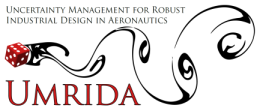 The first UMIRDA UQ-workshop on Uncertainty Quantification was held in Delft, The Netherlands from April 15th to 16th 2015. The focus lied on the application of UQ techniques to industrial test cases with a large number of operational and geometrical uncertainties. The overall objective is the application of UQ methods capable of fulfilling the UMRIDA quantitative objective: “Application of UQ methods for ~10 uncertainties within an acceptable CPU return time of 10 hours on no more than 100 cores parallel.” The UMRIDA UQ-workshop was very successful with respect to the application of various UQ approaches studied within UMRIDA to real industrial challenges. The progress in Technology Readiness Level (TRL) of
the investigated approaches is in line with the UMRIDA work program, where several approaches already meet the UMRIDA quantitative objective on selected database test cases. All together the UMRIDA UQ-Workshop showed significant progress towards a TRL of 5 to 6, which means application of UQ in relevant industrial environments.
For more information please visit the UMRIDA project website.
The first UMIRDA UQ-workshop on Uncertainty Quantification was held in Delft, The Netherlands from April 15th to 16th 2015. The focus lied on the application of UQ techniques to industrial test cases with a large number of operational and geometrical uncertainties. The overall objective is the application of UQ methods capable of fulfilling the UMRIDA quantitative objective: “Application of UQ methods for ~10 uncertainties within an acceptable CPU return time of 10 hours on no more than 100 cores parallel.” The UMRIDA UQ-workshop was very successful with respect to the application of various UQ approaches studied within UMRIDA to real industrial challenges. The progress in Technology Readiness Level (TRL) of
the investigated approaches is in line with the UMRIDA work program, where several approaches already meet the UMRIDA quantitative objective on selected database test cases. All together the UMRIDA UQ-Workshop showed significant progress towards a TRL of 5 to 6, which means application of UQ in relevant industrial environments.
For more information please visit the UMRIDA project website.
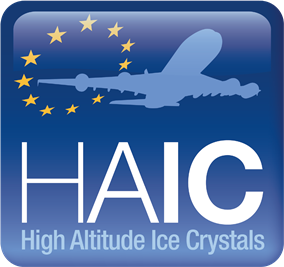 The 2nd international HAIC/HIWC International field campaign took place in Cayenne, French Guyana from 9 – 29 May, 2015. Three different aircraft types were involved in this flight test campaign, i.e., the SAFIRE Falcon 20 aircraft, the NRC Convair 580 aircraft, and the Honeywell B757 aircraft. Also, satellite, ground-based radar and lightning networks, and weather models to determine test areas and to support flight guidance were used.
The 2nd international HAIC/HIWC International field campaign took place in Cayenne, French Guyana from 9 – 29 May, 2015. Three different aircraft types were involved in this flight test campaign, i.e., the SAFIRE Falcon 20 aircraft, the NRC Convair 580 aircraft, and the Honeywell B757 aircraft. Also, satellite, ground-based radar and lightning networks, and weather models to determine test areas and to support flight guidance were used.
The aim of this campaign was to collect data in deep convective clouds with the primary objective to provide the 99th percentile total water content statistics, as a function of distance scale, to industry and regulators. 19 flights were performed representing a large set of data to support regulatory objectives, science and the development of new ice crystals awareness system.
For more information please visit the HAIC project website.
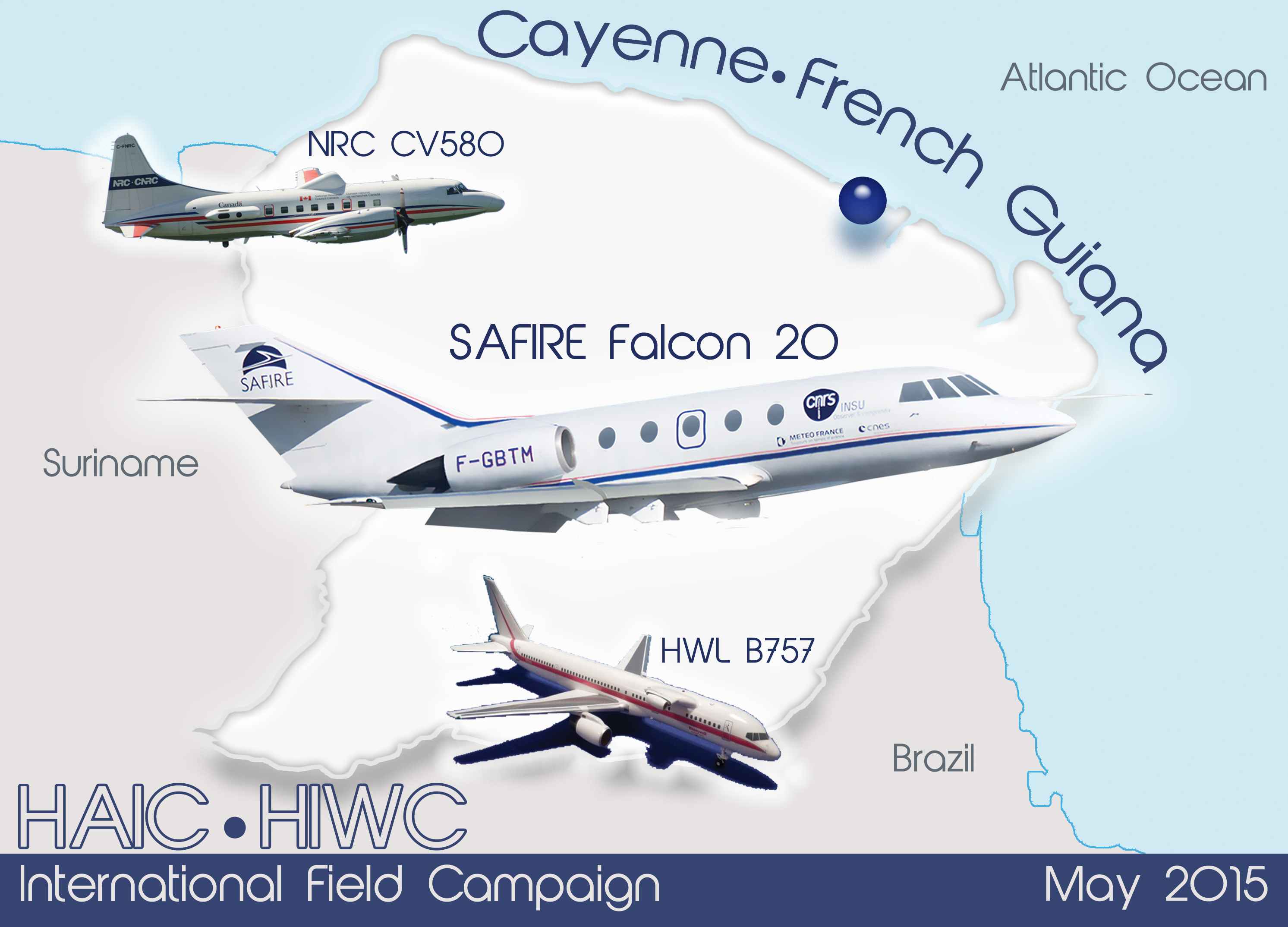
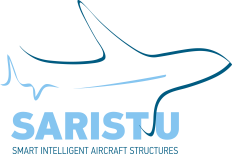 The SARISTU Consortium successfully conducted its End of Project Meeting, which was combined with a 2-day scientific conference in Moscow, Russia, between the 19th and the 21st of May 2015. The event was co-organized by TsAGI, Airbus, Altran, and EASN-TIS. 130 participants including the European Commission, external project assessors and project stakeholders obtained first a general project overview and were able to view the 23.000 part Wind Tunnel Demonstrator, installed in the T-104 wind tunnel where the wing testing and evaluation is being carried out. On subsequent days, 72 conference presentations and posters provided a detailed insight into the projects scientific results and progress. Overall, outstanding feedback was received from participants while the European Commission and the external project assessors expressed their clear satisfaction with the progress and the quality of the scientific work performed. A positive development from the Final SARISTU Conference is that 56 of the presented papers and posters will be compiled in a volume and will be published with the cooperation of Springer. Subsequently, wind tunnel testing of the multifunctional wing including conformal morphing, structural health monitoring and nanocomposites was completed at TsAGI.
For more information please visit the SARISTU project website.
The SARISTU Consortium successfully conducted its End of Project Meeting, which was combined with a 2-day scientific conference in Moscow, Russia, between the 19th and the 21st of May 2015. The event was co-organized by TsAGI, Airbus, Altran, and EASN-TIS. 130 participants including the European Commission, external project assessors and project stakeholders obtained first a general project overview and were able to view the 23.000 part Wind Tunnel Demonstrator, installed in the T-104 wind tunnel where the wing testing and evaluation is being carried out. On subsequent days, 72 conference presentations and posters provided a detailed insight into the projects scientific results and progress. Overall, outstanding feedback was received from participants while the European Commission and the external project assessors expressed their clear satisfaction with the progress and the quality of the scientific work performed. A positive development from the Final SARISTU Conference is that 56 of the presented papers and posters will be compiled in a volume and will be published with the cooperation of Springer. Subsequently, wind tunnel testing of the multifunctional wing including conformal morphing, structural health monitoring and nanocomposites was completed at TsAGI.
For more information please visit the SARISTU project website.
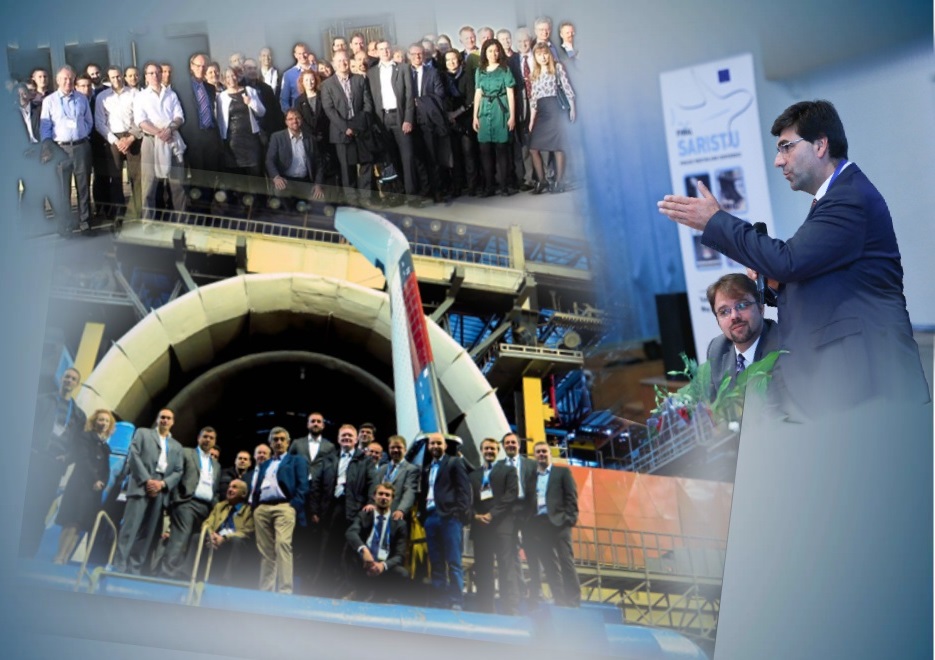
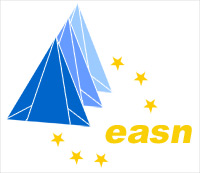 The 5th EASN International Workshop, which will take place from the 2nd until the 4th of September 2015 at the premises of the University of Manchester, aims, like its acclaimed annual predecessors, to offer a forum for discussion and exchange of information about state-of-the-art research and development activities, this year in the field of Aerostructures. The goal is to share high quality, current achievements and new upstream ideas for future research, from running or recently completed European and International research activities in Aeronautics and Air Transport. Up to now, 21 ongoing Aerostructures related research projects have confirmed their participation, most of them with dedicated project sessions. The structure of the event will emphasize into the enhancement of synergies between researchers through interactive sessions. Additionally, the 6th General Assembly meeting of the EASN Association, a poster exhibition and three very interesting Key-Note plenary lectures will take place. The 5th EASN Workshop Key-Note lecturers will share their knowledge and experiences with the audience with regards their distinguished expertise and viewpoint in this field. Keynote plenary lecturers include among others:
The 5th EASN International Workshop, which will take place from the 2nd until the 4th of September 2015 at the premises of the University of Manchester, aims, like its acclaimed annual predecessors, to offer a forum for discussion and exchange of information about state-of-the-art research and development activities, this year in the field of Aerostructures. The goal is to share high quality, current achievements and new upstream ideas for future research, from running or recently completed European and International research activities in Aeronautics and Air Transport. Up to now, 21 ongoing Aerostructures related research projects have confirmed their participation, most of them with dedicated project sessions. The structure of the event will emphasize into the enhancement of synergies between researchers through interactive sessions. Additionally, the 6th General Assembly meeting of the EASN Association, a poster exhibition and three very interesting Key-Note plenary lectures will take place. The 5th EASN Workshop Key-Note lecturers will share their knowledge and experiences with the audience with regards their distinguished expertise and viewpoint in this field. Keynote plenary lecturers include among others:
 Professor Spiros Pantelakis, Chairman of the EASN Association, shares his thoughts on the implementation of H2020 in Aeronautics.
Professor Spiros Pantelakis, Chairman of the EASN Association, shares his thoughts on the implementation of H2020 in Aeronautics.
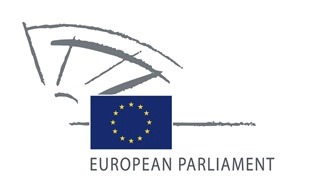 The European Parliament is issuing a call for Expression of Interest in order to compile a list of scientific/academic experts to provide independent and on-hand external expertise for the Committee on Transport and Tourism (TRAN). Any expertise is subject to a corresponding request from the European Parliament relating to issues within the scope of the interest(s) and responsibilities of the Committee, which are:
The European Parliament is issuing a call for Expression of Interest in order to compile a list of scientific/academic experts to provide independent and on-hand external expertise for the Committee on Transport and Tourism (TRAN). Any expertise is subject to a corresponding request from the European Parliament relating to issues within the scope of the interest(s) and responsibilities of the Committee, which are:
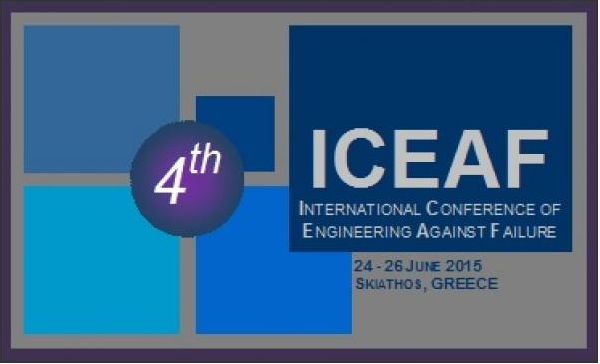 The 4th International Conference of Engineering Against Failure (ICEAF IV) has been successfully held in Skiathos, Greece, from the 24th until the 26th of June 2015. ICEAF IV was chaired by the EASN president, Prof. Spiros Pantelakis (University of Patras) and by Prof. Wolfgang Bleck (RWTH Aachen). The Conference has been organized by the Laboratory of Technology and Strength of Materials (University of Patras) and the Helenic Metallurgical Society; under the auspices of the Federation of European Materials Societies (FEMS) and the European Aeronautics Science Network (EASN).
The 4th International Conference of Engineering Against Failure (ICEAF IV) has been successfully held in Skiathos, Greece, from the 24th until the 26th of June 2015. ICEAF IV was chaired by the EASN president, Prof. Spiros Pantelakis (University of Patras) and by Prof. Wolfgang Bleck (RWTH Aachen). The Conference has been organized by the Laboratory of Technology and Strength of Materials (University of Patras) and the Helenic Metallurgical Society; under the auspices of the Federation of European Materials Societies (FEMS) and the European Aeronautics Science Network (EASN).

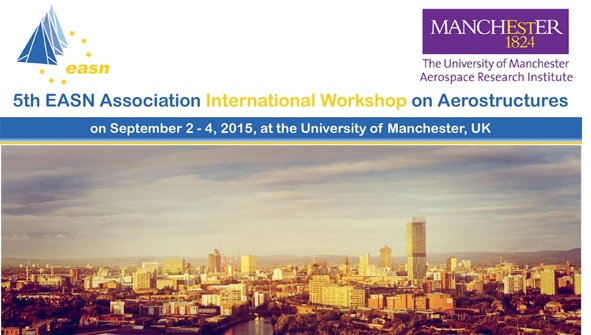
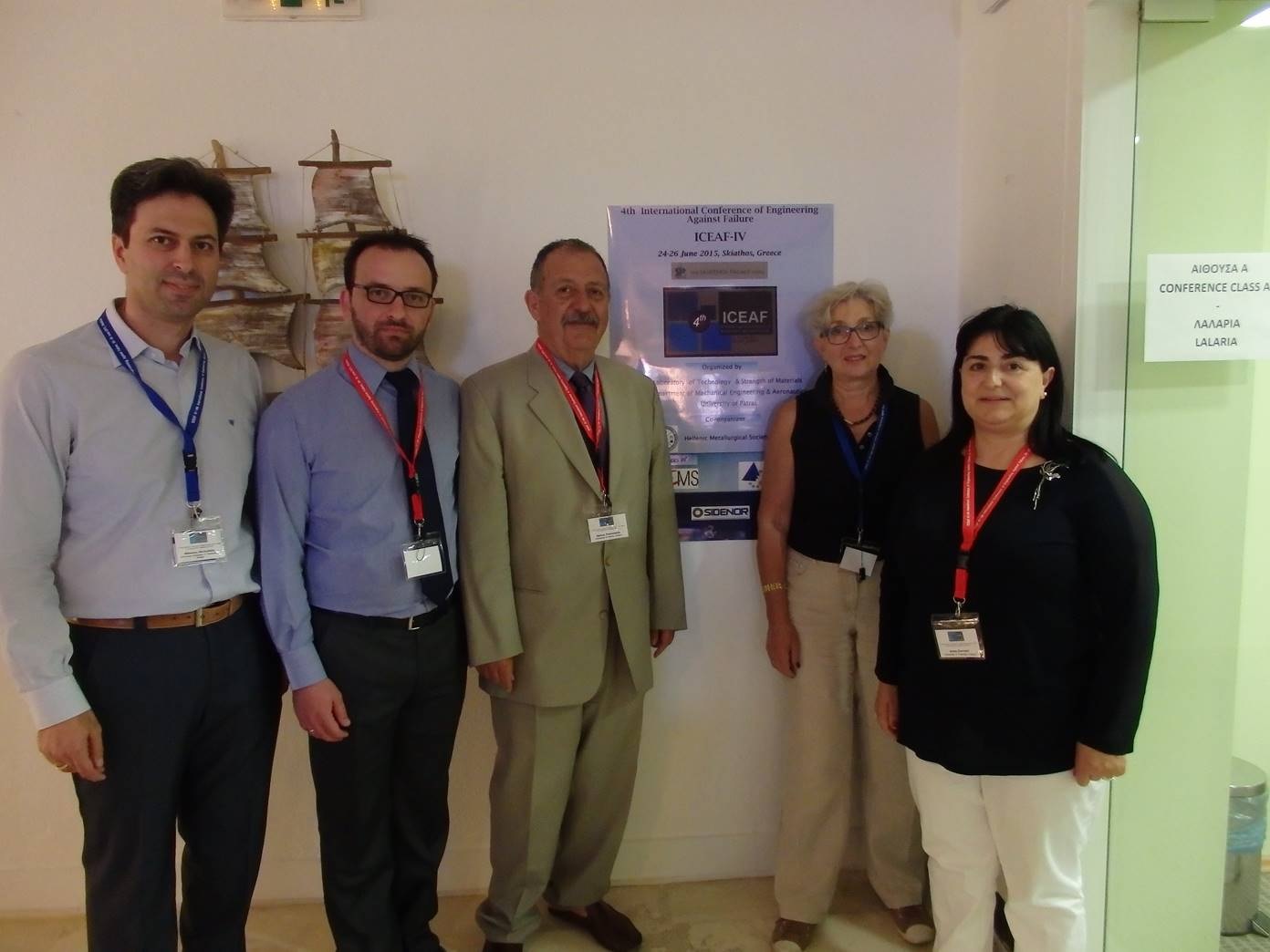
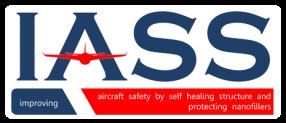 The IASS project has entered the last months of its lifetime and all partners are working at full speed towards the successful finalisation of the project’s activities. The final review meeting was an opportunity to evaluate the overall achievements of the project and it is clear that IASS has achieved all of its main objectives and has set the base for further investigation on functionalised self-healing materials.
The IASS project has entered the last months of its lifetime and all partners are working at full speed towards the successful finalisation of the project’s activities. The final review meeting was an opportunity to evaluate the overall achievements of the project and it is clear that IASS has achieved all of its main objectives and has set the base for further investigation on functionalised self-healing materials.


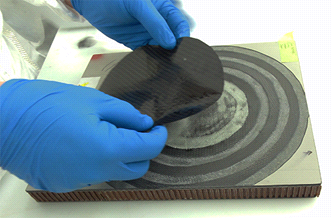

 Cold spray repairs on Al and Ti alloys were realized using process parameters beyond the state of the art, and now the characterization is almost complete. Throughout these investigations we were able to assess the optimal temperature and stand-off-distance required to get the maximum deposition efficiency, as well as improved mechanical properties and porosity with respect to the alloys being studied. The new high-pressure portable plant prototype is now ready and the first trials are due to start in the following weeks.
Cold spray repairs on Al and Ti alloys were realized using process parameters beyond the state of the art, and now the characterization is almost complete. Throughout these investigations we were able to assess the optimal temperature and stand-off-distance required to get the maximum deposition efficiency, as well as improved mechanical properties and porosity with respect to the alloys being studied. The new high-pressure portable plant prototype is now ready and the first trials are due to start in the following weeks.
 While the intermediate reporting period has been officially approved, a set of parameters is being investigated, in order to develop a useable aircraft cockpit prototype. Once a useable prototype is developed, preliminary evaluations will be conducted before continuing with the refinement for the final prototype so as for the robustness of the software for future implementation to be ensured. Besides that and in order to show the feasibility of the Semantic Virtual Cockpit Module, the consortium has developed a demo containing a first version of the Semantic Engine, the semantic scene graph interface and mappings and workflows as Linked Programmes. The advanced Virtual Reality (VR) environment is expected to be used as a reusable and low-cost simulation test-bed for experimenting with various configurations and set-ups of virtual cockpits so as to allow the human-centred assessment of future cockpit architectures.
The i-VISION progress and achievements obtained so far, will be presented in the two upcoming aviation research major events, namely the
While the intermediate reporting period has been officially approved, a set of parameters is being investigated, in order to develop a useable aircraft cockpit prototype. Once a useable prototype is developed, preliminary evaluations will be conducted before continuing with the refinement for the final prototype so as for the robustness of the software for future implementation to be ensured. Besides that and in order to show the feasibility of the Semantic Virtual Cockpit Module, the consortium has developed a demo containing a first version of the Semantic Engine, the semantic scene graph interface and mappings and workflows as Linked Programmes. The advanced Virtual Reality (VR) environment is expected to be used as a reusable and low-cost simulation test-bed for experimenting with various configurations and set-ups of virtual cockpits so as to allow the human-centred assessment of future cockpit architectures.
The i-VISION progress and achievements obtained so far, will be presented in the two upcoming aviation research major events, namely the 
 The QUICOM project is now approaching its end. Currently all RTD work packages are pushing hard to achieve the goals of the targeted QUICOM technology platform. This contains novel, non-destructive, time and cost efficient, highly detailed and fully 3D inspection techniques of aeronautic CFRP components. Cutting edge X-ray computed tomography methods for non-destructive structural and material characterization have been developed and tested against alternative technologies (e.g. ultrasound). Focus is now placed on the completion of the development and the evaluation of the generated methods. Benchmarking will be realized both by developers and aeronautic companies in order to examine the validity and industrial applicability of these techniques, as well as the possibilities for integrating these models and algorithms into standard procedures.
QUICOM will be attending the 5th EASN Workshop on Aerostructures as well as the AERODAYS 2015 Conference and we are looking forward to meeting you there.
The QUICOM project is now approaching its end. Currently all RTD work packages are pushing hard to achieve the goals of the targeted QUICOM technology platform. This contains novel, non-destructive, time and cost efficient, highly detailed and fully 3D inspection techniques of aeronautic CFRP components. Cutting edge X-ray computed tomography methods for non-destructive structural and material characterization have been developed and tested against alternative technologies (e.g. ultrasound). Focus is now placed on the completion of the development and the evaluation of the generated methods. Benchmarking will be realized both by developers and aeronautic companies in order to examine the validity and industrial applicability of these techniques, as well as the possibilities for integrating these models and algorithms into standard procedures.
QUICOM will be attending the 5th EASN Workshop on Aerostructures as well as the AERODAYS 2015 Conference and we are looking forward to meeting you there.
 With 6 months of operations under its belt, the PERSEUS (Promoting Excellence & Recognition Seal of European Aerospace Universities) Coordination and Support Action, has already reached several achievements and milestones. Namely, the project has started-off, with two parallel activities. The one devoted to the realization of a survey (complete map) of the quality and accreditation systems of EU aerospace education, and the second aiming at the development of standards for aero-engineering curricula.
Moreover, in the course of the development of standards, the 1st PERSEUS open Workshop was successfully organized and held on June 2nd 2015 at the EC premises in Brussels. Following the Steering Committee meeting that took place on the 1st of June and whereby the Work-Package leaders exchanged information about the main progress and achievements of their respective WP, the PERSEUS Workshop was an opportunity for the project’s Network of Experts and Advisory Board members to provide their valuable viewpoint on the preliminary standards and learning outcomes identified for the aero-engineering curricula. The feedback provided by these key-experts is also expected to greatly support the PERSEUS partners in completing the definition of the specific accreditation criteria.
For more information please visit the
With 6 months of operations under its belt, the PERSEUS (Promoting Excellence & Recognition Seal of European Aerospace Universities) Coordination and Support Action, has already reached several achievements and milestones. Namely, the project has started-off, with two parallel activities. The one devoted to the realization of a survey (complete map) of the quality and accreditation systems of EU aerospace education, and the second aiming at the development of standards for aero-engineering curricula.
Moreover, in the course of the development of standards, the 1st PERSEUS open Workshop was successfully organized and held on June 2nd 2015 at the EC premises in Brussels. Following the Steering Committee meeting that took place on the 1st of June and whereby the Work-Package leaders exchanged information about the main progress and achievements of their respective WP, the PERSEUS Workshop was an opportunity for the project’s Network of Experts and Advisory Board members to provide their valuable viewpoint on the preliminary standards and learning outcomes identified for the aero-engineering curricula. The feedback provided by these key-experts is also expected to greatly support the PERSEUS partners in completing the definition of the specific accreditation criteria.
For more information please visit the 
 The
The 

 The HIKARI project has brought together all the hypersonic initiatives in Europe and Japan to drive the convergence of their concepts and roadmaps. Thanks to the expertise of its 16 partners from industry, research centers and academia, it has derived a common path towards a joint design for high speed air transport and ultimately towards joint flight testing. The project has shown how the Europe-Japan partnership could allow achieving such high ambitions as defining the guidelines and roadmaps towards future high speed air transport. This fruitful outcome allows considering a natural next step for this cooperation, in order to achieve a joint design following the HIKARI guidelines, and to prepare joint flight demonstrations following the HIKARI roadmap.
The HIKARI project has brought together all the hypersonic initiatives in Europe and Japan to drive the convergence of their concepts and roadmaps. Thanks to the expertise of its 16 partners from industry, research centers and academia, it has derived a common path towards a joint design for high speed air transport and ultimately towards joint flight testing. The project has shown how the Europe-Japan partnership could allow achieving such high ambitions as defining the guidelines and roadmaps towards future high speed air transport. This fruitful outcome allows considering a natural next step for this cooperation, in order to achieve a joint design following the HIKARI guidelines, and to prepare joint flight demonstrations following the HIKARI roadmap.

 SUNJET II (SUstainable Network for Japan-Europe aerospace research and Technology cooperation II) aims at enhancing the relations between EU and Japan in research activities related to aviation. The SUNJET II project initiated its activities with a very successful
SUNJET II (SUstainable Network for Japan-Europe aerospace research and Technology cooperation II) aims at enhancing the relations between EU and Japan in research activities related to aviation. The SUNJET II project initiated its activities with a very successful 
 The first UMIRDA UQ-workshop on Uncertainty Quantification was held in Delft, The Netherlands from April 15th to 16th 2015. The focus lied on the application of UQ techniques to industrial test cases with a large number of operational and geometrical uncertainties. The overall objective is the application of UQ methods capable of fulfilling the UMRIDA quantitative objective: “Application of UQ methods for ~10 uncertainties within an acceptable CPU return time of 10 hours on no more than 100 cores parallel.” The UMRIDA UQ-workshop was very successful with respect to the application of various UQ approaches studied within UMRIDA to real industrial challenges. The progress in Technology Readiness Level (TRL) of
the investigated approaches is in line with the UMRIDA work program, where several approaches already meet the UMRIDA quantitative objective on selected database test cases. All together the UMRIDA UQ-Workshop showed significant progress towards a TRL of 5 to 6, which means application of UQ in relevant industrial environments.
For more information please visit the
The first UMIRDA UQ-workshop on Uncertainty Quantification was held in Delft, The Netherlands from April 15th to 16th 2015. The focus lied on the application of UQ techniques to industrial test cases with a large number of operational and geometrical uncertainties. The overall objective is the application of UQ methods capable of fulfilling the UMRIDA quantitative objective: “Application of UQ methods for ~10 uncertainties within an acceptable CPU return time of 10 hours on no more than 100 cores parallel.” The UMRIDA UQ-workshop was very successful with respect to the application of various UQ approaches studied within UMRIDA to real industrial challenges. The progress in Technology Readiness Level (TRL) of
the investigated approaches is in line with the UMRIDA work program, where several approaches already meet the UMRIDA quantitative objective on selected database test cases. All together the UMRIDA UQ-Workshop showed significant progress towards a TRL of 5 to 6, which means application of UQ in relevant industrial environments.
For more information please visit the  The 2nd international HAIC/HIWC International field campaign took place in Cayenne, French Guyana from 9 – 29 May, 2015. Three different aircraft types were involved in this flight test campaign, i.e., the SAFIRE Falcon 20 aircraft, the NRC Convair 580 aircraft, and the Honeywell B757 aircraft. Also, satellite, ground-based radar and lightning networks, and weather models to determine test areas and to support flight guidance were used.
The 2nd international HAIC/HIWC International field campaign took place in Cayenne, French Guyana from 9 – 29 May, 2015. Three different aircraft types were involved in this flight test campaign, i.e., the SAFIRE Falcon 20 aircraft, the NRC Convair 580 aircraft, and the Honeywell B757 aircraft. Also, satellite, ground-based radar and lightning networks, and weather models to determine test areas and to support flight guidance were used.

 The SARISTU Consortium successfully conducted its
The SARISTU Consortium successfully conducted its 
 Distributed propulsion with ultra-short take-off and landing performance
The members of the SOAR (diStributed Open-rotor AiRcraft) project consortium are investigating the aerodynamic behavior of the open-fan wing distributed propulsion technology and applying their findings to future aircraft designs and business cases including a firefighter and a crop duster.
Distributed propulsion with ultra-short take-off and landing performance
The members of the SOAR (diStributed Open-rotor AiRcraft) project consortium are investigating the aerodynamic behavior of the open-fan wing distributed propulsion technology and applying their findings to future aircraft designs and business cases including a firefighter and a crop duster.
 30th International Conference on Surface Modification Technologies (SMT30) – Politecnico di Milano, Milan (Italy), 29th June - 1st July, 2016.
30th International Conference on Surface Modification Technologies (SMT30) – Politecnico di Milano, Milan (Italy), 29th June - 1st July, 2016.
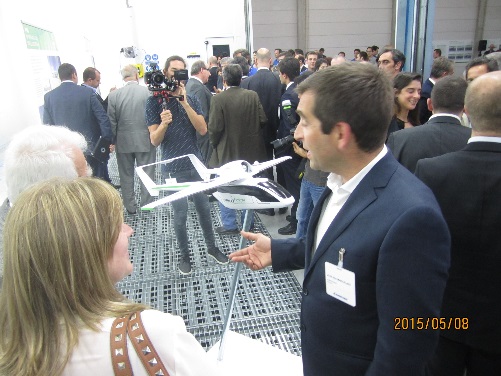 Portuguese collaborative project final results were unveiled
Upon the successful completion of the conceptual and technological developments, the
Portuguese collaborative project final results were unveiled
Upon the successful completion of the conceptual and technological developments, the 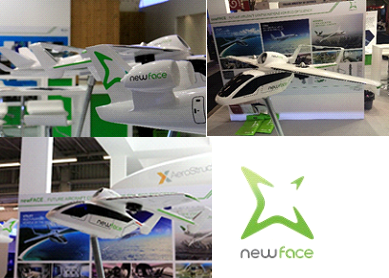
 The TraMOOC project is in its sixth month of activities and the partners’ efforts are going full steam ahead on the preparation of the first Machine Translation (MT) prototype. More specifically, the first months of the project were dedicated to the definition of the end user requirements, which will lead to the identification of the system’s functionalities, a necessary step towards the realization of the TraMOOC system architecture. Additionally, during this period other activities involved the collection of relevant parallel data for training the MT system and the conversion of all data acquired to a suitable common format so as to enable their use for training the MT system.
The TraMOOC project is in its sixth month of activities and the partners’ efforts are going full steam ahead on the preparation of the first Machine Translation (MT) prototype. More specifically, the first months of the project were dedicated to the definition of the end user requirements, which will lead to the identification of the system’s functionalities, a necessary step towards the realization of the TraMOOC system architecture. Additionally, during this period other activities involved the collection of relevant parallel data for training the MT system and the conversion of all data acquired to a suitable common format so as to enable their use for training the MT system.
